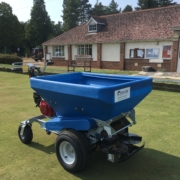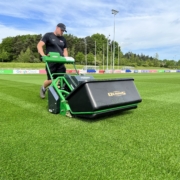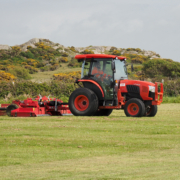Three top tips to avoid waterlogged gardens
Three top tips to avoid waterlogged gardens: The Met Office’s predictions of a warmer than average summer and the recent hot weather may well look promising for homeowners who have struggled with wet gardens during the unseasonably rainy spring.
However, the long-range outlook also warns of an ongoing, increased chance of rain which, when combined with dry spells, can increase the risk of waterlogging and flooding.

Three top tips to avoid waterlogged gardens
Alongside the impact of climate change becoming increasingly evident in recent years, tradespeople are seeing an increasing number of requests for landscaping work that can withstand these unpredictable conditions.
Here, Catriona Williams, Senior Category Manager at Jewson, shares three tips to help builders, landscapers and tradespeople to weather-proof outdoor spaces and advise customers through these changing times.
1) Utilise hard landscaping to drain drives and patios
“Hard landscaping teamed with the right drainage system will create a sustainable and hard- wearing system for water management in outdoor areas, which also looks aesthetically pleasing and adds to the overall design of your garden.
“For example, permeable paving – predominantly used for driveways and patio areas – allows rainwater to drain through it and soak into the ground below, minimising the chances of standing water in even the heaviest rain.
“Channel drainage is often used around the perimeter of a garden or driveway to direct the flow of water, while soakaway options underground can create an almost invisible solution to complement the aesthetic of the area. Both routes require a good quality base to be as effective as possible above ground. This should include a combination of coarse and fine aggregates that manage the amount of water that enters the system, which are then paired with perforated drains or attenuation crates to capture the water.
“At Jewson, we have a number of innovative drainage solutions from our extensive supplier network and our in-branch experts can provide practical advice on the best solutions for each project.”
2) Explore more sustainable solutions
“Customers that are looking for the most sustainable solutions should consider natural flood management solutions that have strong biodiversity benefits.
“Laying a quality substrate and topsoil followed by new turf can help to reduce flooding in gardens that have become waterlogged and unmanageable. Lawns can be paired with an underground rainwater harvesting system, which will divert any standing floodwater to a storage tank. In many cases, water captured in underground storage tanks can be redirected to support plant life above the surface.
“Another popular option among eco-conscious customers are bioscapes, which have inbuilt water management systems and offer ecologically rich habitats for wildlife. There are an increasing number of sustainable solutions coming to market, so this could provide the perfect opportunity to discuss potential upgrades and new projects with customers, ahead of the summer.”
3) Tackle flood-prone lawns
“Lawns are one of the most troublesome areas when it comes to waterlogging, particularly when the surface is uneven. Those that are sloped should be levelled out with new turf to create a consistent plain for water to flow.
“However, when tackling a waterlogged lawn, it is important to firstly allow any standing water to recede as much as possible – which means waiting to tackle the project until any weather warnings have passed. The surface that is left behind will be weak and there should be no attempts to cut back or mow the lawn until it has had a chance to recover. Aerating then seeding and feeding the soil will encourage regrowth.
“Alongside this, ditches can be installed throughout the perimeter of the lawn – either using soft landscaping and natural materials or by installing a drain system that channels water to the edge and away from the grass. Alternatives to grass – such as densely-planted meadows, moss and rock gardens – are also worth suggesting in areas prone to regular flooding, or in situations when customers are looking for a low maintenance option, as they naturally slow the flow of water, making it soak away more slowly.
“While waterlogging and inclement weather poses a challenge, it also creates an opportunity for tradespeople who can show an understanding and expertise in how best to tackle the growing problem. Demonstrating a knowledge of the best ways to handle the different conditions, while creating a stylish and practical outdoor space that has a positive impact on the environment, can be a good way to get ahead of the competition – and the elements.”
Catriona Williams, Senior Category Manager, Jewson
For the latest industry news visit landscapingmatters.co.uk/news
Get all of the big headlines, pictures, opinions and videos on stories that matter to you.
Follow us on Twitter and Instagram for fun, fresh and engaging content.
You can also find us on Facebook for more of your must-see news, features, videos and pictures from Landscaping Matters












